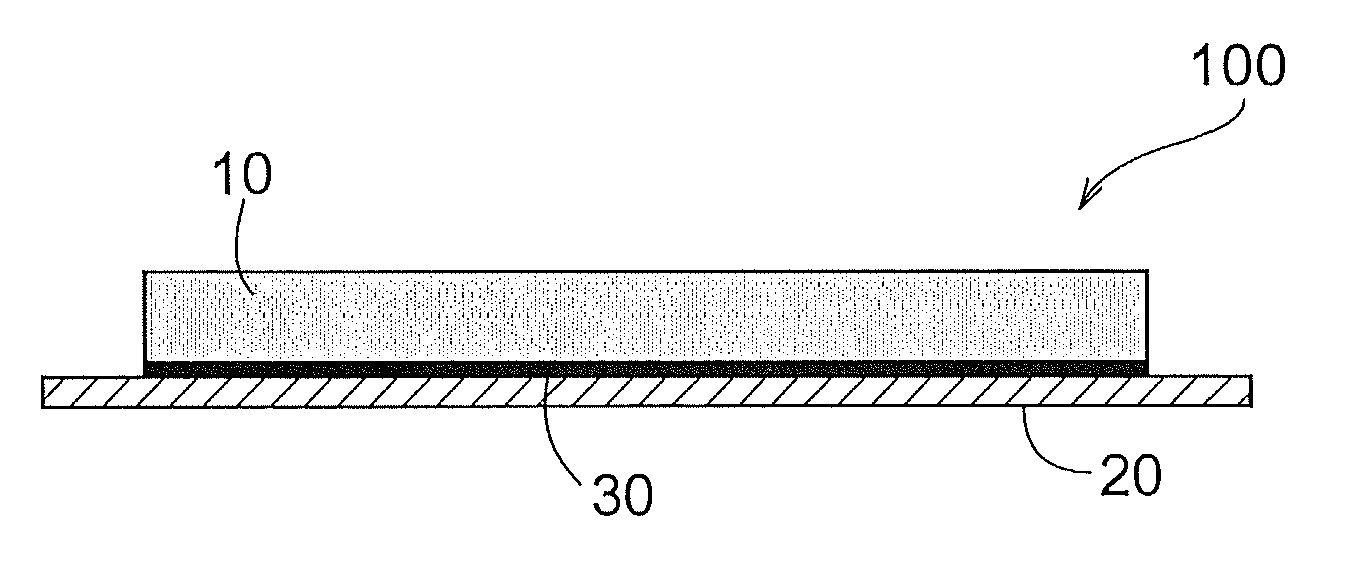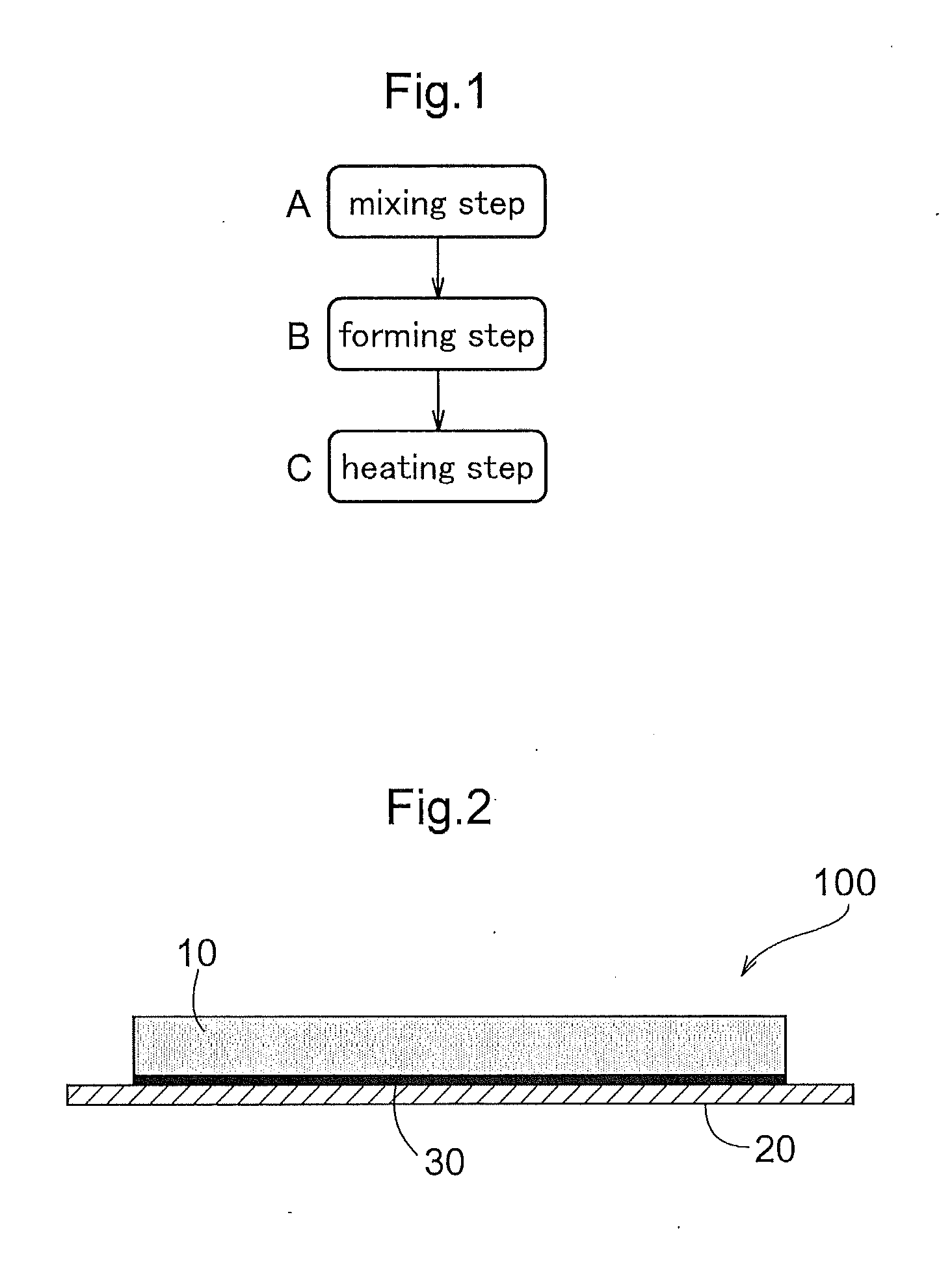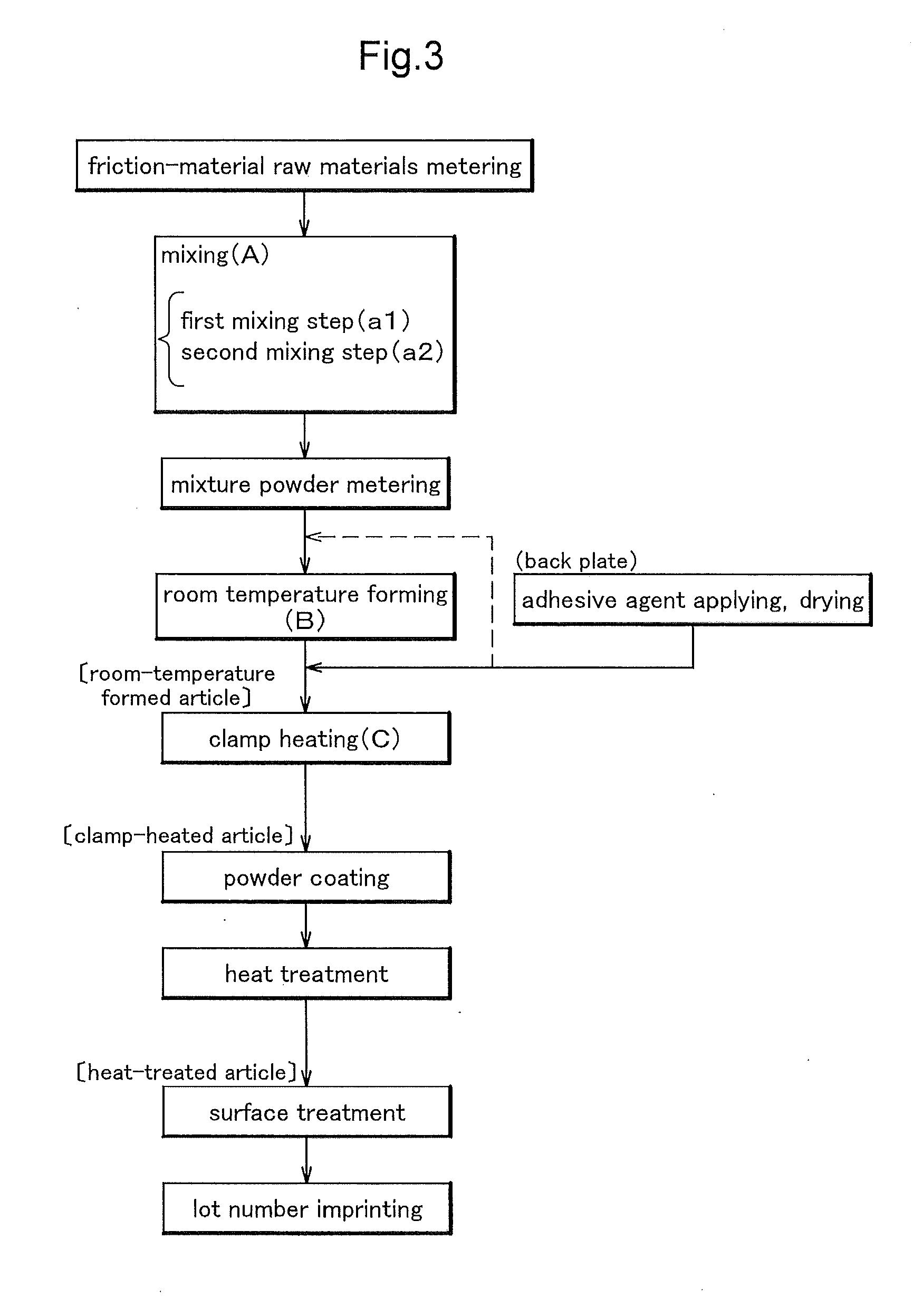Method of producing friction material
a technology of friction material and friction lining, which is applied in the field of friction material production, can solve the problems of increasing the cost of the method, increasing the risk of deterioration of the friction performance of the friction material, and increasing the cost of the product, so as to reduce the cost of the method, and improve the friction performance. the effect of friction material performan
- Summary
- Abstract
- Description
- Claims
- Application Information
AI Technical Summary
Benefits of technology
Problems solved by technology
Method used
Image
Examples
embodiments
EXAMPLE 1
[0065]Next, an embodiment of the method of producing a friction material relating to the present invention will be explained (FIG. 3).
[0066]After metering of the respective components of the friction-material raw materials, these were charged in a Henschel mixer to effect a mixing step A. In this mixing step A, mixing was effected in two steps. That is, at the first mixing step (a1), the friction-material raw materials other than slated lime (high-ortho phenol resin, water, aramid fibers, friction modifier) were mixed together for 10 minutes. Subsequently, at the second mixing step (a2), slated line (filler) was added thereto and these were mixed together for 2 minutes. After the mixture powder produced by the mixing was metered, this was subjected to a room-temperature forming (forming step B) for 10 seconds.
[0067]To the plate-like member 20, an amount of adhesive was applied and then dried on the side thereof on which the room-temperature formed article 10 was to be place...
example 2
[0074]By using the friction material producing method described in Example 1, friction materials were produced with varying the components of the friction material in many ways. In these, changes if any in scattering of dust at the time of production and in states of the mixture powders (room-temperature formed articles) were checked (Inventive Examples 1-7). And, as comparison examples, cases (Comparison Examples 1, 2) in which the water contents were set outside the range of 3-10 wt. % and cases (Comparison Examples 3-5) in which either high-ortho phenol resin or slated lime was not added were checked also.
[0075]As the fibrous base material, either one of dried aramid fibers and water-impregnated aramid fibers were employed. As the high-ortho phenol resin, a novolak type was employed. As the friction modifier or the fibrous base material, an organic material and an inorganic material were employed. The organic material was added with cashew dust, rubber powder and the inorganic ma...
PUM
| Property | Measurement | Unit |
|---|---|---|
| wt. % | aaaaa | aaaaa |
| temperature | aaaaa | aaaaa |
| water content | aaaaa | aaaaa |
Abstract
Description
Claims
Application Information
 Login to View More
Login to View More - R&D
- Intellectual Property
- Life Sciences
- Materials
- Tech Scout
- Unparalleled Data Quality
- Higher Quality Content
- 60% Fewer Hallucinations
Browse by: Latest US Patents, China's latest patents, Technical Efficacy Thesaurus, Application Domain, Technology Topic, Popular Technical Reports.
© 2025 PatSnap. All rights reserved.Legal|Privacy policy|Modern Slavery Act Transparency Statement|Sitemap|About US| Contact US: help@patsnap.com



